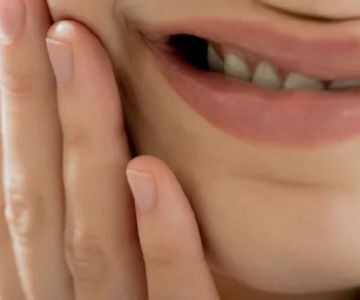Understanding Oral Lichen Planus and Its Autoimmune Origins
Oral lichen planus (OLP) is a chronic inflammatory condition that affects the mucous membranes inside the mouth, presenting as white, lacy patches, redness, or painful sores. It is considered an autoimmune disorder, where the body’s immune system mistakenly attacks the cells of the oral mucosa. The exact cause of OLP remains complex, but it is closely linked to autoimmune diseases and immune dysregulation.
In the United States, awareness of OLP has grown as more patients seek explanations for persistent oral discomfort and lesions. This condition often affects adults between 30 and 60 years old and has a higher prevalence in women. Recognizing the autoimmune factors that trigger oral lichen planus is essential for timely diagnosis and effective management.
1. The Role of Autoimmune Disease in Oral Lichen Planus Development
Immune System Malfunction and T-Cell Involvement
Oral lichen planus is primarily driven by an autoimmune response, where cytotoxic T lymphocytes target the basal cells of the oral epithelium. This immune attack leads to inflammation, cell damage, and the characteristic lesions seen in OLP. The immune system’s overreaction can be triggered by various internal or external factors, including genetic predisposition and environmental triggers.
Unlike infectious diseases, OLP is not contagious. Instead, it reflects a malfunction in immune regulation, causing the immune system to recognize normal oral tissues as harmful and attack them.
2. Common Autoimmune Diseases Associated with Oral Lichen Planus
Link to Systemic Lupus Erythematosus (SLE)
Systemic lupus erythematosus is a well-known autoimmune disease that can co-occur with oral lichen planus. SLE involves widespread inflammation affecting skin, joints, kidneys, and mucous membranes, including the oral cavity. Patients with lupus may develop oral ulcers or lichenoid lesions similar to OLP.
The overlapping symptoms can complicate diagnosis, requiring comprehensive clinical evaluation and laboratory testing.
Connection with Sjögren’s Syndrome
Sjögren’s syndrome, another autoimmune disorder targeting moisture-producing glands, often presents with oral dryness and inflammation. Many patients with Sjögren’s also exhibit lichenoid lesions, making OLP a common oral manifestation in this population.
Other Autoimmune Conditions
Less commonly, oral lichen planus can be associated with autoimmune thyroid diseases, rheumatoid arthritis, and chronic active hepatitis C infection, all of which involve immune dysregulation that may trigger or exacerbate OLP symptoms.
3. Symptoms and Clinical Presentation of Oral Lichen Planus
Typical Signs and Patient Experiences
OLP symptoms vary widely but often include burning sensation, sensitivity to spicy or acidic foods, and visible white or red patches inside the mouth. Some patients report persistent discomfort or pain that affects eating and speaking. The lesions can be flat, raised, or ulcerated, sometimes leading to secondary infections.
For example, Jennifer, a 45-year-old teacher from Texas, experienced persistent mouth soreness and difficulty swallowing for months before a dentist diagnosed her with oral lichen planus. Her story is common among those who initially mistake symptoms for less serious conditions like canker sores.
4. Diagnosis Challenges and Autoimmune Testing
Importance of Biopsy and Immunofluorescence
Diagnosing OLP requires careful clinical examination combined with biopsy of affected tissue. Histopathological analysis often reveals characteristic features of immune-mediated epithelial damage. Direct immunofluorescence testing helps detect immune complexes deposited in the mucosa, confirming autoimmune involvement.
Because OLP shares similarities with other lichenoid reactions, such as drug-induced lesions, accurate diagnosis is critical to tailor treatment and address underlying autoimmune disease if present.
5. Treatment Approaches for Autoimmune-Related Oral Lichen Planus
Managing Inflammation and Symptoms
Treatment aims to reduce immune-mediated inflammation, relieve pain, and prevent complications. Topical corticosteroids are commonly prescribed to control lesions locally. In severe cases, systemic immunosuppressants or biologic therapies may be needed, especially if associated with systemic autoimmune diseases.
Adjunctive care includes maintaining excellent oral hygiene, avoiding irritants like tobacco and spicy foods, and regular dental monitoring. Psychological support can be beneficial as chronic discomfort impacts quality of life.
6. Living with Oral Lichen Planus: Patient Stories and Support
Long-Term Management and Monitoring
Living with OLP requires ongoing management and collaboration with dental and medical professionals. Patients like Michael, a 52-year-old accountant diagnosed with OLP linked to autoimmune thyroiditis, emphasize the importance of regular check-ups and lifestyle adjustments to control flare-ups.
Support groups and educational resources also play a vital role in helping patients cope emotionally and stay informed about advancements in treatment.
Where to Find Expert Care and Support
For Americans seeking diagnosis or treatment of oral lichen planus and related autoimmune conditions, Dentistry Toothtruth provides expert resources and referrals to specialists. Their dedicated services focus on comprehensive oral health care that integrates medical and dental expertise to improve patient outcomes.



 Westgate Dental Arts3.0 (2 review)
Westgate Dental Arts3.0 (2 review) Coventry Family Dental4.0 (247 review)
Coventry Family Dental4.0 (247 review) Familia Dental3.0 (1028 review)
Familia Dental3.0 (1028 review) Dr. Daniel S. Fife, DDS4.0 (31 review)
Dr. Daniel S. Fife, DDS4.0 (31 review) Dentistry At Suburban Square: Michael I. Wollock, DMD4.0 (1228 review)
Dentistry At Suburban Square: Michael I. Wollock, DMD4.0 (1228 review) Comfort Care Dental4.0 (1156 review)
Comfort Care Dental4.0 (1156 review) The Importance of Oral Health Education During Pregnancy for a Healthy Pregnancy
The Importance of Oral Health Education During Pregnancy for a Healthy Pregnancy Why Skipping Dental Checkups Can Lead to Bigger Oral Health Problems
Why Skipping Dental Checkups Can Lead to Bigger Oral Health Problems Best Tips for Brushing Your Teeth Properly for Healthy Gums: Essential Techniques for Oral Health
Best Tips for Brushing Your Teeth Properly for Healthy Gums: Essential Techniques for Oral Health Advantages of Porcelain Dental Restorations
Advantages of Porcelain Dental Restorations How Can Diabetes Cause Tooth and Gum Problems? Preventing and Managing Oral Health Issues
How Can Diabetes Cause Tooth and Gum Problems? Preventing and Managing Oral Health Issues Healthy Habits for Promoting Good Oral Health and Hygiene: Tips for a Healthy Smile
Healthy Habits for Promoting Good Oral Health and Hygiene: Tips for a Healthy Smile